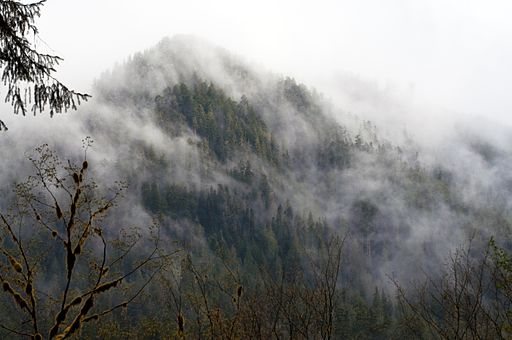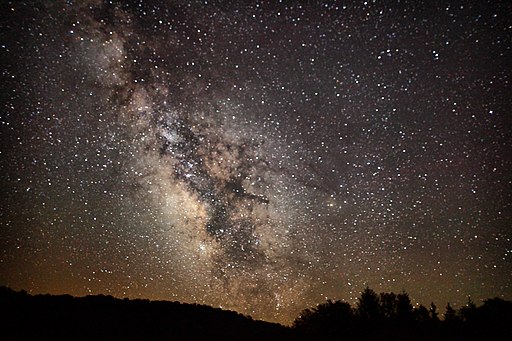(This entry from my ango log is a timely reminder of how difficult life was in the jungle during those first frigid, rainy months. I wrote this record down because I knew I would soon forget these hardships when I returned to the Red Dust World.
Simple things aren't simple when you live outdoors.
The brother who drove me out on the last day of ango also brought my camera so I could take some photos of the place where I'd just spent 100 days alone. By then it was late summer, so the rainfly was furled, revealing the door and mosquito netting of the walls behind it. Equally telling is the fact that the entire world is no longer dark and sodden, as it was when I wrote the following entry.)
BEDTIME ORYOKI:
1. Unzip the tent fly, then the tent door, just at the bottom, so as not to let bugs in, and slide the rolled blue foam mat, orange Thermarest, and journal case through the slit.
2. Zip back up, return to Tyvek [meditation shelter] and [secure it] for the night. (Mostly hanging stuff up and blowing out the candle after thanking it.)
3. Pee.
4. Lay [walking] stick outside tent door. Unzip the tent and sit in it with feet still outside on the ground. Take off the road [right] sandal, then the heart [left] sandal, and leave them outside, on the heart side, under the fly.
5. Brush off feet with gloved hands if wet, or by rubbing them together if not, and lift them into the tent.
6. Switch on the tent light and place it in the attic [small net hammock overhead]. Turn off the flashlight and store it there as well.
7. Pull the stick inside, clean off the [dirty] end, and lay it along the door sill. Zip up the door.
8. Take off specs and put them in the attic.
9. Untie the blue mat and unroll it along the door side, beside the stick. Store the tying string in the attic.
10. Reinflate the Thermarest and lay it on top of the blue mat, at [the] head end.
11. Spread the [sleeping] bag out on the mats, zipper to the heart (inboard) side. Spread the [cotton sleeping bag] liner on top of the bag.
12. Take off the [monk] robe and lay it next to the bedroll on the floor, interior down, knife [worn on the robe's belt] to heart side, mala [also on the belt] road side, collar headward.
13. Remove needed articles (hand sanitiser, toilet paper, gloves) from cargo pockets of trousers and lay them on the floor against the standing [back] wall, chest-high [when lying down].
14. Take off trousers, roll them up, and place them on the rain poncho against the standing wall, at about knee height [when lying down].
15. Roll up [a] pillow from un-needed clothes and other fabric items. Place at head-level, on heart side.
16. Remove underwear and place on trousers.
17. Snake into liner [first], and then into the bag.
18. Spread the robe over the sleeping bag as a blanket, interior down, collar at chin level.
19. Tuck robe's roadside hem corner, belt end, and sleeve under the blue mat (not the orange one), to keep it anchored during the night.
20. Mount night guard [a plastic device I wear at night to protect my teeth].
21. Turn off the light, lie back, find and place pillow.
And pleasant dreams.
This process is very time-consuming. But there's no other way to do it so you meet all your needs: warm, dry, as comfortable as possible, properly positioned on the ground, able to find stuff you might need during the night, especially emergency stuff such as you might need during an attack of Giardia or something threatening outside the tent, like a bear.
























